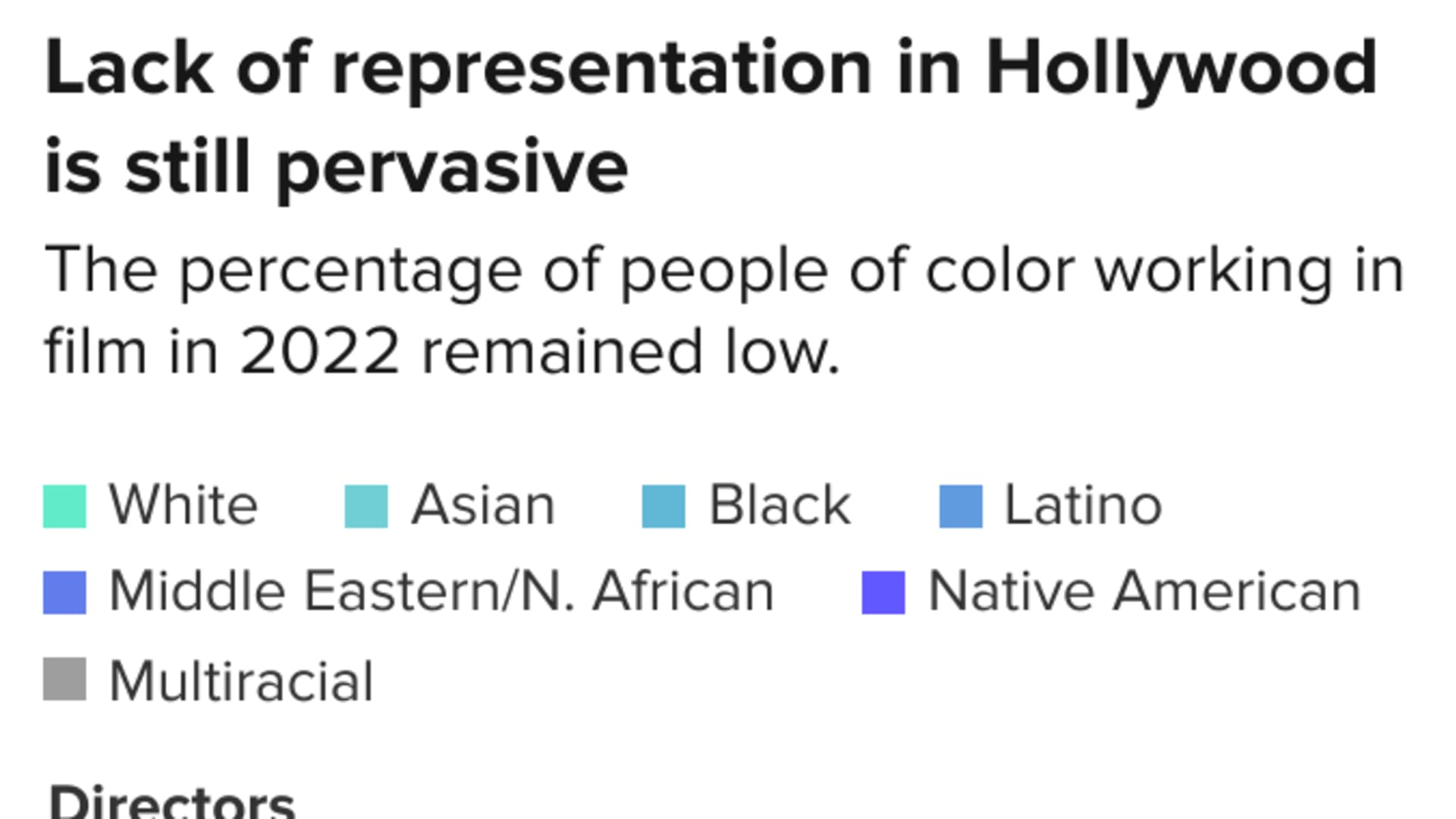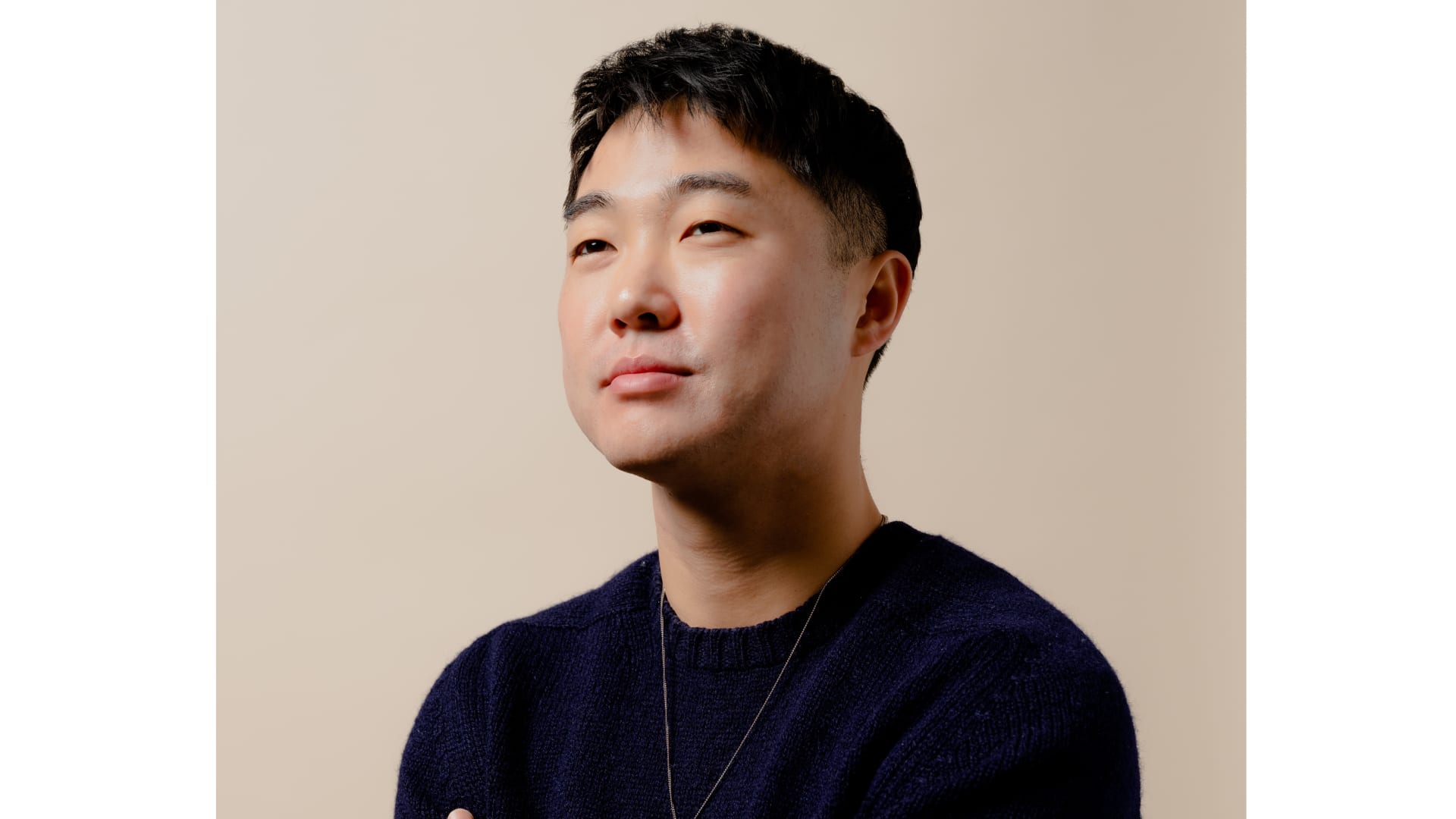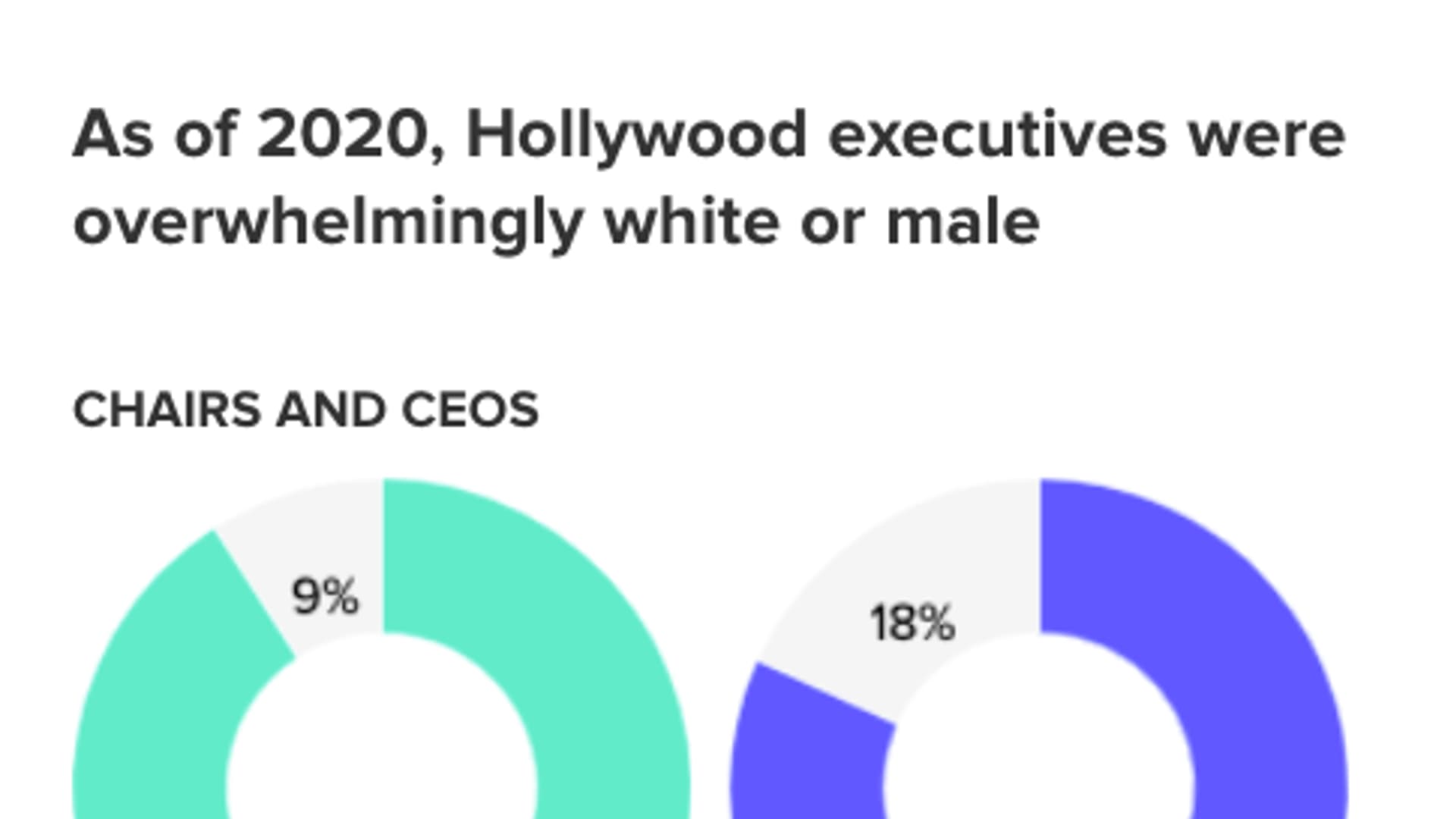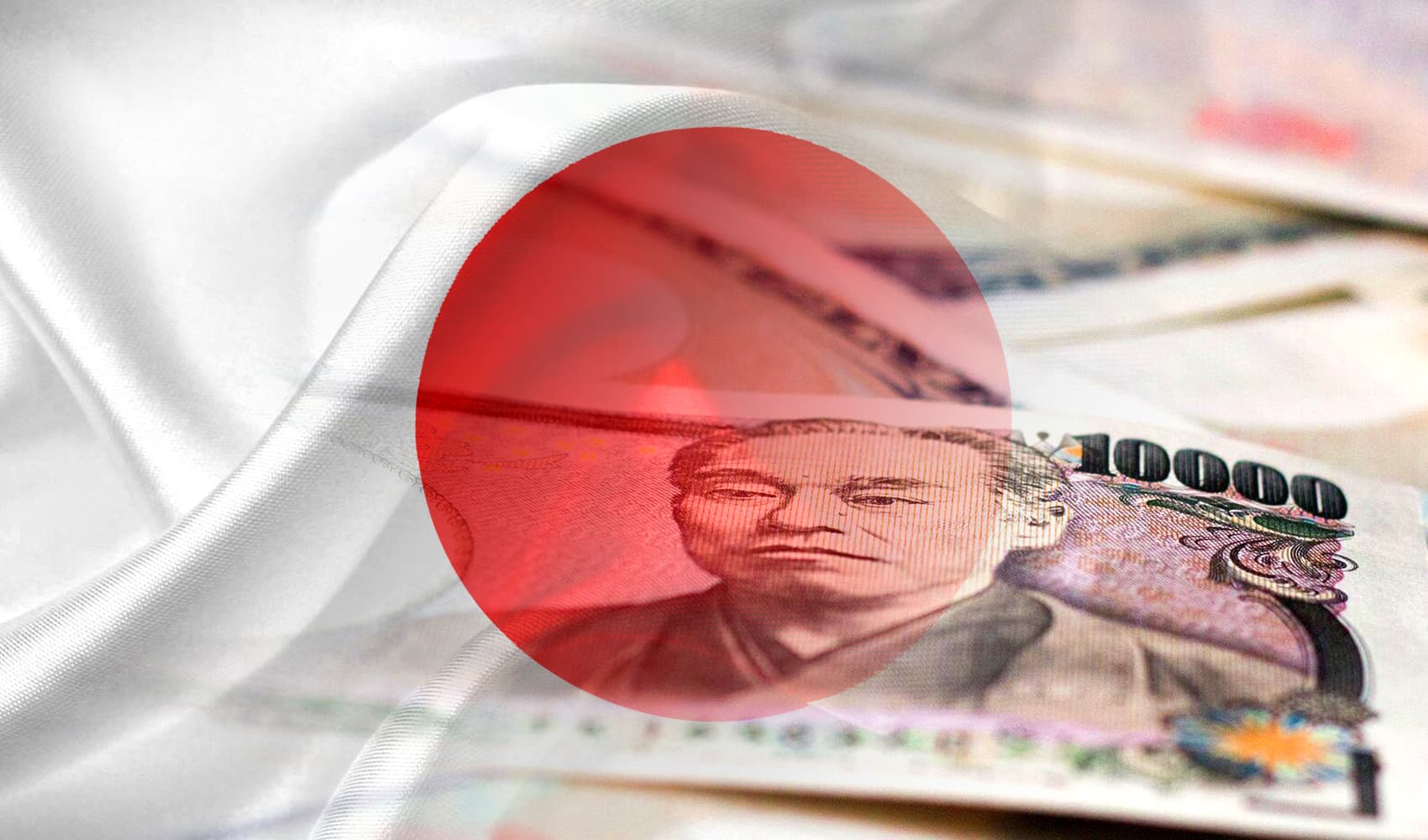
Brianna Somera wasn't always sure she was cut out to be a director. The 21-year-old grew up dancing and singing and wanted to make music videos, but she also didn't see a lot of people like her onscreen.
It wasn't until the 2018 release of "Crazy Rich Asians," the first Hollywood feature with an all-Asian cast in 25 years, when something clicked. Somera, who is Filipina, remembers watching it with friends and thinking, "Wow, these are faces I've always wanted to see, and stories I'm familiar with," she tells CNBC Make It. A year later, she enrolled as a film production major at Chapman University.
A lot has changed in Hollywood, and for Asian American creatives, in the time Somera has been in school. "Crazy Rich Asians" went on to be a box-office hit; Marvel highlighted its first Asian American superhero in 2021's "Shang-Chi and the Legend of the Ten Rings;" Pixar's "Turning Red" was the second-most streamed movie in 2022; and in 2023, just as Somera graduated with her film degree, the A24 sleeper hit "Everything Everywhere All At Once" swept at awards ceremonies and clinched seven Academy Awards.
With Daniel Kwan taking home the Oscar for co-directing "Everything Everywhere," three of the last four best-directing Oscar winners, and two more nominees, have been filmmakers of Asian descent, signaling a big win for diversity within some of the highest honors in Hollywood.
Get Southern California news, weather forecasts and entertainment stories to your inbox. Sign up for NBC LA newsletters.
Still, experts and filmmakers say, there's a long way to go to ensure major achievements among Asian American and Pacific Islander filmmakers become a standard rather than an exception.
Asian Americans are underrepresented in Hollywood
Asian Americans make up roughly 7% of the U.S. population but are underrepresented at all levels in front of and behind the camera, according to UCLA's latest Hollywood Diversity Report. On the acting side, they made up just 2.3% of leads and 6.5% of roles for movies released in theaters in 2022. Behind the cameras, Asian Americans made up 5.6% of directors and 4.5% of writers for movies released in theaters last year.
Progress has been made in the last decade since UCLA launched the report, says Michael Tran, co-author of the report, but it's "constantly up and down." After several years of improvement, the overall racial, ethnic and gender diversity among movie actors, directors and writers slid back to 2019 levels.

Much of that is due to how researchers analyzed data during the pandemic, when a minimal theatrical release market was combined with streaming numbers. In doing so, "we found these big leaps in our numbers, and it got us excited to think, 'the Hollywood film industry is really getting the message,'" Tran says.
Money Report
For example, while just 25% of directors with theater releases in 2019 were women or people of color, they made up 43% of directors across theatrical and streaming releases in 2021.
But with theater-going on the rebound, researchers are back to separating theater and streaming numbers, and "what we found is all progress is in the streaming space, and it takes a step backwards when you look at theatrical releases in 2022."
In 2022, 73% of major theater releases were directed by white men, and 60% of white male directors had budgets of $30 million or more.
Women and people of color are given more opportunities to direct in the streaming space and are more likely to have diverse casts, but that also means they're limited to projects with lower budgets, smaller distribution and less of an impact on the movie-making industry overall.
'Diversity sells,' but Hollywood doesn't act in its own best interests
Years of studies from UCLA and other analyses show that diversity sells: "TV and movies that do the best most closely match the diversity of the U.S., and that's something we've seen every year for 10 years," Tran says.
That data point was part of the reason William Yu, a Korean American filmmaker based in Los Angeles, launched the #StarringJohnCho social media campaign in 2016, which called attention to films that cast white actors to play Asian characters, and the overall lack of Asian representation in blockbuster leads.
Seven years later, Yu says, "it's infuriating we're still trying to harp on the same data point."

"As much as it is a moral issue to people from the Asian American community," he says, "it's also a financial decision. There's money to be made. Decisionmakers are willfully ignoring that by sticking to what they think works, when the data shows otherwise."
One big problem is Hollywood's refusal to greenlight projects from AAPI creatives and filmmakers of color, Yu says. Films by diverse creatives have the added pressure to represent multifaceted communities with nuance, but also to be a commercial success and prove to decisionmakers why they should invest in diverse stories.
He's hopeful the success of "Everything Everywhere" will lead Hollywood to take more risks with AAPI stories and creatives of color. Projects like the Oscar-winner "only happen when gatekeepers of the industry allow people to experiment and try and fail and go for really ambitious visions," he says.
That can only happen if Hollywood doesn't deprioritize representation in a down economy, when businesses often cut efforts around diversity, equity and inclusion. "We're worried diversity is being treated as a luxury that can be done away with," Tran says.
"If the industry is a money-making institution, it should follow the money. But it doesn't," he adds. "We can't predict what happens next when people don't act in their economic or moral best interests."
As of 2020, the most recent time UCLA analyzed studio data, the heads of the 11 major and mid-major studios, such as chairs and CEOs, were 91% white and 82% male.
Things only get marginally better moving down the chain of command: Senior management teams were 93% white and 80% male. And while the executives responsible for casting, marketing, legal and other core studio functions ("unit heads") were a little more diverse in terms of gender (59% male), they, too, were overwhelmingly white (86%).

"Lasting change will probably only come when we not only diversify the casts and the creatives behind the scenes but also the executive suites and people making top-level decisions," Tran says.
Yu adds that the gap between consumer interest in diverse storytelling versus Hollywood's investments in white male filmmakers "makes decisionmakers in the industry look more out of touch with what's happening."
'I have to direct the films I want to see'
Still, Yu, says he "couldn't have predicted" the growth of AAPI achievements in film since he launched #StarringJohnCho.
Yu says award wins can inspire hope for filmmakers and moviegoers, but they're not proof of lasting change in the industry. "What we're looking for is systemic changes to the rule," he says. "It shows there are talented people with amazing stories to tell, but the change we're all trying to push for is: it's not one or two of us who make it to the mountaintop. We all want to be able to show how great we are."
Somera, the Chapman University film student, declared her directing emphasis during her junior year but says doing so felt "daunting" since she didn't see many other Asian, let alone Asian and female, peers going into the specialty.
She was often in classrooms with peers who were white and male, learning from professors who were white and male, to discuss films by directors who are white and male. But she found support in other students, professors and mentors of color and others who understand the value of diverse and culturally-rich storytelling.
Somera says seeing people of all backgrounds fall in love with "Everything Everywhere" inspired her senior thesis project "Homeland," a 15-minute short based on stories from her lolo, or grandfather, and his time in the Philippines before moving to the U.S.
After graduating this spring, Somera plans to go into commercial directing and eventually hopes to become a features director. She hopes to bring more representations of Asian American stories to the screen.
"If I want to make a change as a director," she says, "I have to direct the films I want to see."
Want to be smarter and more successful with your money, work & life? Sign up for our new newsletter!
Get CNBC's free report, 11 Ways to Tell if We're in a Recession, where Kelly Evans reviews the top indicators that a recession is coming or has already begun.






